Related Research Articles

Covington is a home rule-class city in Kenton County, Kentucky, United States. Located at the confluence of the Ohio and Licking rivers, it lies south of Cincinnati, Ohio, across the Ohio and west of Newport, Kentucky, across the Licking. It had a population of 40,691 at the 2020 census, making it the largest city in Northern Kentucky and the fifth-most populous city in the state. A part of the Cincinnati metropolitan area, it is one of Kenton County's two seats, along with Independence.
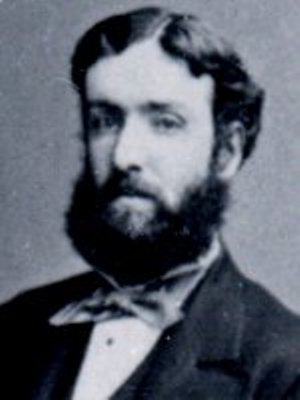
Bruce Price was an American architect and an innovator in the Shingle Style. The stark geometry and compact massing of his cottages in Tuxedo Park, New York, influenced Modernist architects, including Frank Lloyd Wright and Robert Venturi.

Willis Jefferson Polk was an American architect, best known for his work in San Francisco, California. For ten years, he was the West Coast representative of D.H. Burnham & Company. In 1915, Polk oversaw the architectural committee for the Panama–Pacific International Exposition (PPIE).
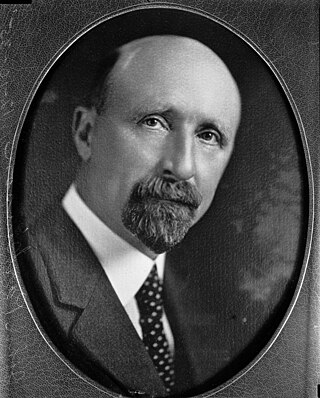
John and Donald Parkinson were a father-and-son architectural firm operating in the Los Angeles area in the early 20th century. They designed and built many of the city's iconic buildings, including Grand Central Market, the Memorial Coliseum, and City Hall.
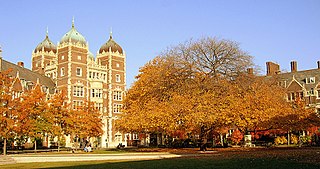
Cope and Stewardson (1885–1912) was a Philadelphia architecture firm founded by Walter Cope and John Stewardson, and best known for its Collegiate Gothic building and campus designs. Cope and Stewardson established the firm in 1885, and were joined by John's brother Emlyn in 1887. It went on to become one of the most influential and prolific firms of the late-nineteenth and early-twentieth centuries. They made formative additions to the campuses of Bryn Mawr College, Princeton University, the University of Pennsylvania, and Washington University in St. Louis. They also designed nine cottages and an administrative building at the Sleighton School, which showed their adaptability to other styles, because their buildings here were Colonial Revival with Federal influences. In 1912, the firm was succeeded by Stewardson and Page formed by Emlyn Stewardson and George Bispham Page.

Solon Spencer Beman was an American architect based in Chicago, Illinois and best known as the architect of the planned Pullman community and adjacent Pullman Company factory complex, as well as Chicago's renowned Fine Arts Building. Several of his other largest commissions, including the Pullman Office Building, Pabst Building, and Grand Central Station in Chicago, have since been demolished. Beman designed numerous Christian Science churches and influenced the design of countless more.
Samuel Hannaford was an American architect based in Cincinnati, Ohio. Some of the best known landmarks in the city, such as Music Hall and City Hall, were of his design. The bulk of Hannaford's work was done locally, over 300 buildings, but his residential designs appear through New England to the Midwest and the South.

The Licking Riverside Historic District is a historic district in Covington, Kentucky, that is on the National Register of Historic Places. Its boundaries are Fourth Street to the north, Scott Street, Eighth Street to the south, and the Licking River. Bungalow/Craftsman, Second Empire, and Italianate are the primary architectural styles of the district.

Willoughby James Edbrooke (1843–1896) was an American architect and a bureaucrat who remained faithful to a Richardsonian Romanesque style into the era of Beaux-Arts architecture in the United States, supported by commissions from conservative federal and state governments that were spurred by his stint in 1891-92 as Supervising Architect of the U.S. Treasury Department.

The former First Unitarian Church is a historic church building at 130 Highland Avenue in Somerville, Massachusetts. The stone church was built in 1894 for a Unitarian congregation. It was designed by Hartwell & Richardson and is a good example of Richardsonian Romanesque design. The building presently (2022) houses the Mission Church of Our Lord Jesus Christ.
Charles C. Crapsey was an American architect known for his church designs. He trained under James K. Wilson from 1865 to 1873, worked on his own between 1873 and 1888, and then with Wilson again from 1895 to 1901. He worked with William R. Brown from 1889 to 1895 and with E. N. Lamm from 1901 to 1909. His work is distinctive for its creative combinations of shaping, massing, and materials, and Crapsey is known especially for his design of churches. He was born in Fairmount, Ohio and died in Cincinnati.
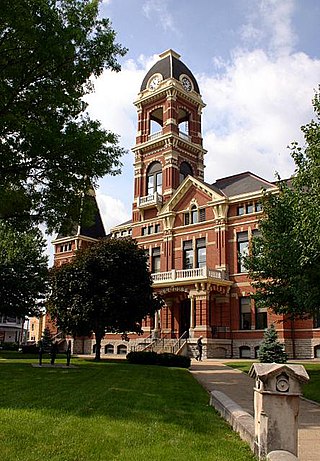
Albert C. Nash (1825-1890) was an American architect best known for his work in Milwaukee and Cincinnati.
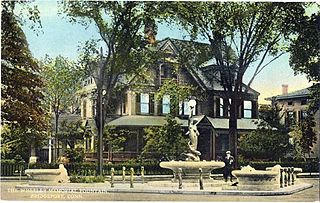
Joseph Walter Northrop (1860–1940) was an American architect.

The Emory Place Historic District is a historic district in Knoxville, Tennessee, United States, located just north of the city's downtown area. The district consists of several commercial, residential, religious, and public buildings that developed around a late nineteenth century train and trolley station. The district includes the Knoxville High School building, St. John's Lutheran Church, First Christian Church, and some of the few surviving rowhouses in Knoxville. The district was listed on the National Register of Historic Places in 1994, with a boundary increase in 2023.
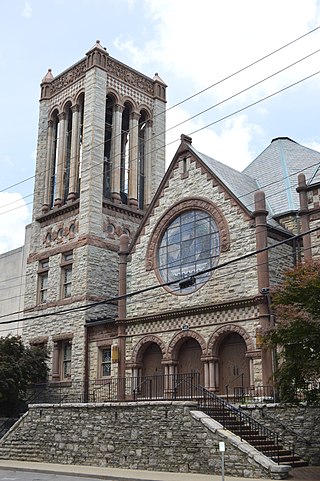
The Central Christian Church in Lexington, Kentucky, is a historic church at 205 E. Short Street, and an active congregation of the Christian Church. The church was founded by Barton Stone and was the place where the Stone and Campbell movements united to form in 1832 as part of the Restoration Movement. The church was previously known as Hill Street Christian Church and Main Street Christian Church.

Lytle Park Historic District is a historic district in Cincinnati, Ohio, United States. Roughly bounded by 3rd, 5th, Sycamore, Commercial Sq., and Butler Sts. in downtown Cincinnati, it centers on Lytle Park.

Charles Alling Gifford was an American architect and a partner in the New York City firm of Gifford & Bates. He is best remembered for his resort hotels, but also designed houses, churches, and five armories for the New Jersey National Guard.

George G. Adams was an American architect from Lawrence, Massachusetts.
Charles T. Beardsley Jr. (1861–1937) was an American architect practicing in Bridgeport, Connecticut.
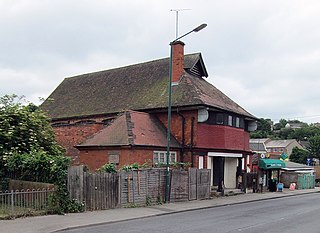
William Richard Gleave ARIBA was a surveyor and architect based in Nottingham.
References
- ↑ "Wisenall, Bernard T." Kenton County Public Library. Retrieved 19 July 2019.
- 1 2 3 4 5 Bernard T. Wisenall Archived 2010-09-17 at the Wayback Machine
- ↑ Rendering of First Christian Church published in The Inland Architect (XXI,11[12/1893]).
- ↑ "Park Place at Lytle, Cincinnati | 122039". Emporis. Archived from the original on June 4, 2011. Retrieved 2022-05-03.
{{cite web}}: CS1 maint: unfit URL (link)